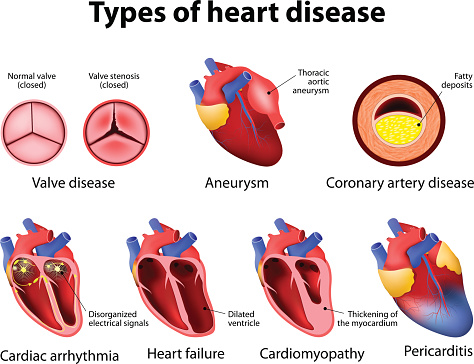A CHD Overview Can Provide Valuable Information For Parents

A CHD overview can provide valuable information for parents facing this diagnosis. This condition affects as many as two million American babies each year. Although the causes and treatments of congenital heart disease differ from child to child, the overall outlook for children is improving. This article provides an overview of the various types of CHDs, as well as links to additional resources. Read on to learn more about congenital heart disease (CHD). You can also get answers to your questions about the disorder.
The first step in treating CHD is determining the type. There are two main categories of CHD: simple and complex. A simple CHD has no symptoms and doesn’t need treatment. However, complex conditions can have severe complications and require medical intervention. Some of these defects require surgery and some may need several surgeries throughout their lives. Often, the only option for a child with a critical CHD is to undergo multiple procedures.
While simple CHDs may not require treatment, complex ones may require multiple procedures. While a simple CHD may require no medical intervention, a complicated CHD will require surgery. The majority of children who suffer from critical defects will require at least one surgery, which can last until their adulthood. Some patients will require more than one surgery, so it is important to seek medical advice as early as possible. If you suspect that you or your child has a CHD, visit your doctor as soon as possible.
The best treatment for a complex CHD is surgery. Although there are several ways to treat a complex condition, a simple one may require no medical intervention. For instance, a child with a complex CHD will require a heart transplant within the first year of life. Depending on the severity of the condition, additional surgeries may be necessary throughout the rest of the patient’s life. A child with a complex CHD will require surgery. The child will likely need additional procedures as they grow older.
A child with a complex CHD is likely to have severe symptoms. While simple CHDs are often minor and do not require medical treatment, complex CHDs can require surgeries to repair the damage. In severe cases, medical interventions are required. In addition to surgery, children with a complex CHD will have multiple surgeries throughout their lifetime. The most common type of surgery for a child with a complex CHD is bypass surgery.

Because of the complexity of these defects, it is vital to understand how these diseases are caused. Symptoms of complex CHDs can range from mild to severe. A complicated CHD is a complex disease that usually requires multiple surgical procedures to repair the heart. The best treatment for a complex CHD is not available for every case. There is no single cause of CHD, and many patients are cured. It is often difficult to identify the cause of a heart defect.
The cause of IHD is not completely clear. It can be inherited, or it can be acquired by accident. Some IHDs are genetically predisposed. A child with congenital heart disease may have a rare disorder in the family. Symptoms of complex CAD are similar in children of different races. A child with a complex heart may have a heart murmur. Apart from the causes, there are other underlying problems that can cause this disease.
Although CHD is a common problem in young families, it remains an unsolved medical problem that for many remains a lifelong problem. Most people with CAD live until they are eighteen years old, but you can live longer if you get treatment. In many cases, the symptoms of IHD are mild or do not require surgical intervention. In some cases, the heart can function normally for up to 50 years without any treatment.
Advances in diagnosis have made CAD a widespread problem. Although there are several specialized centers around the world for the treatment of coronary artery disease, these hospitals specialize in these procedures. Because these conditions are so complex, it is often impossible to treat a child without surgery. The patient’s parents may wonder if they are to blame for what they did during pregnancy. The site Alfaman Mexico
says that in most cases there are genetic factors that can lead to CAD, but the disease is always fatal.